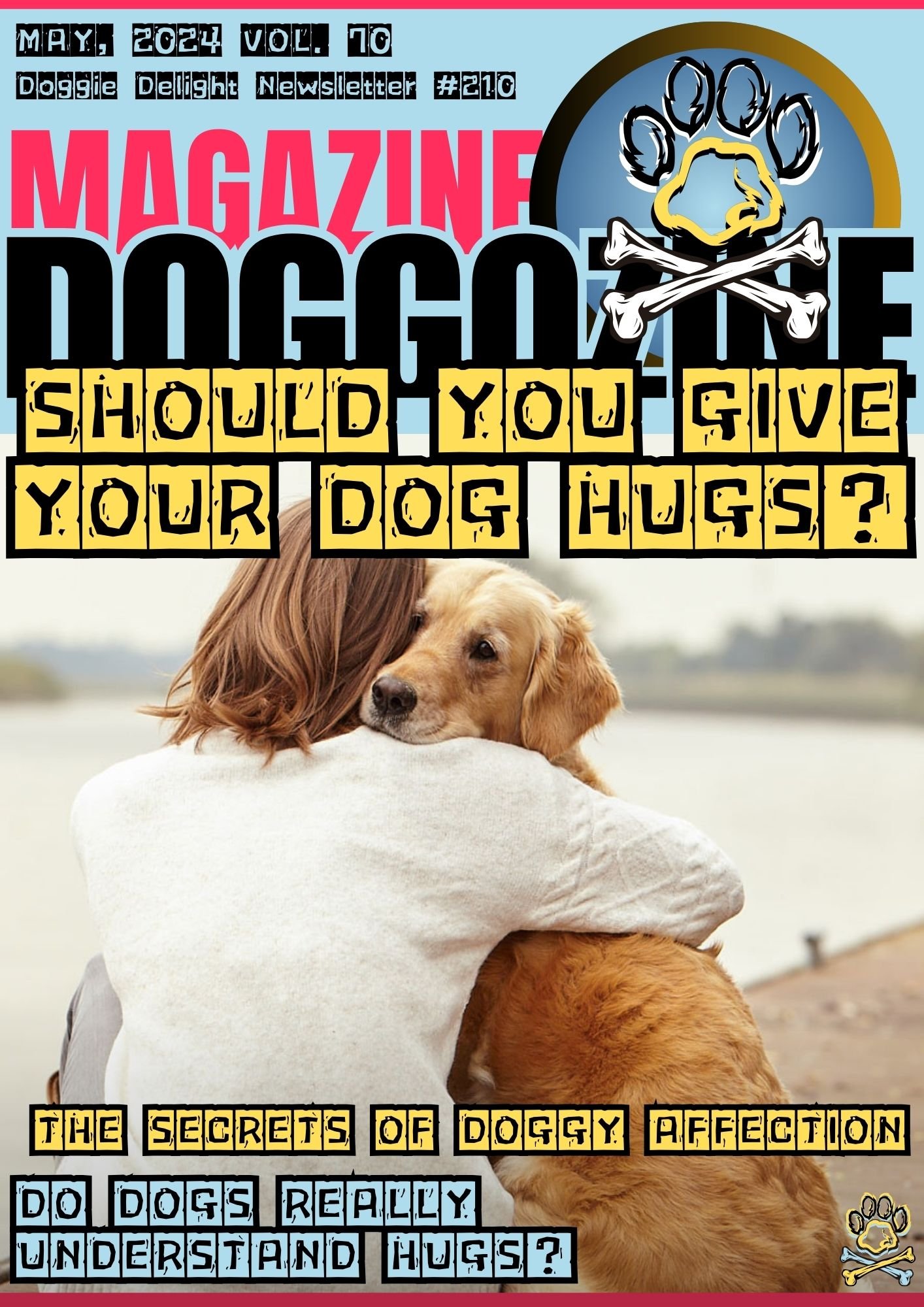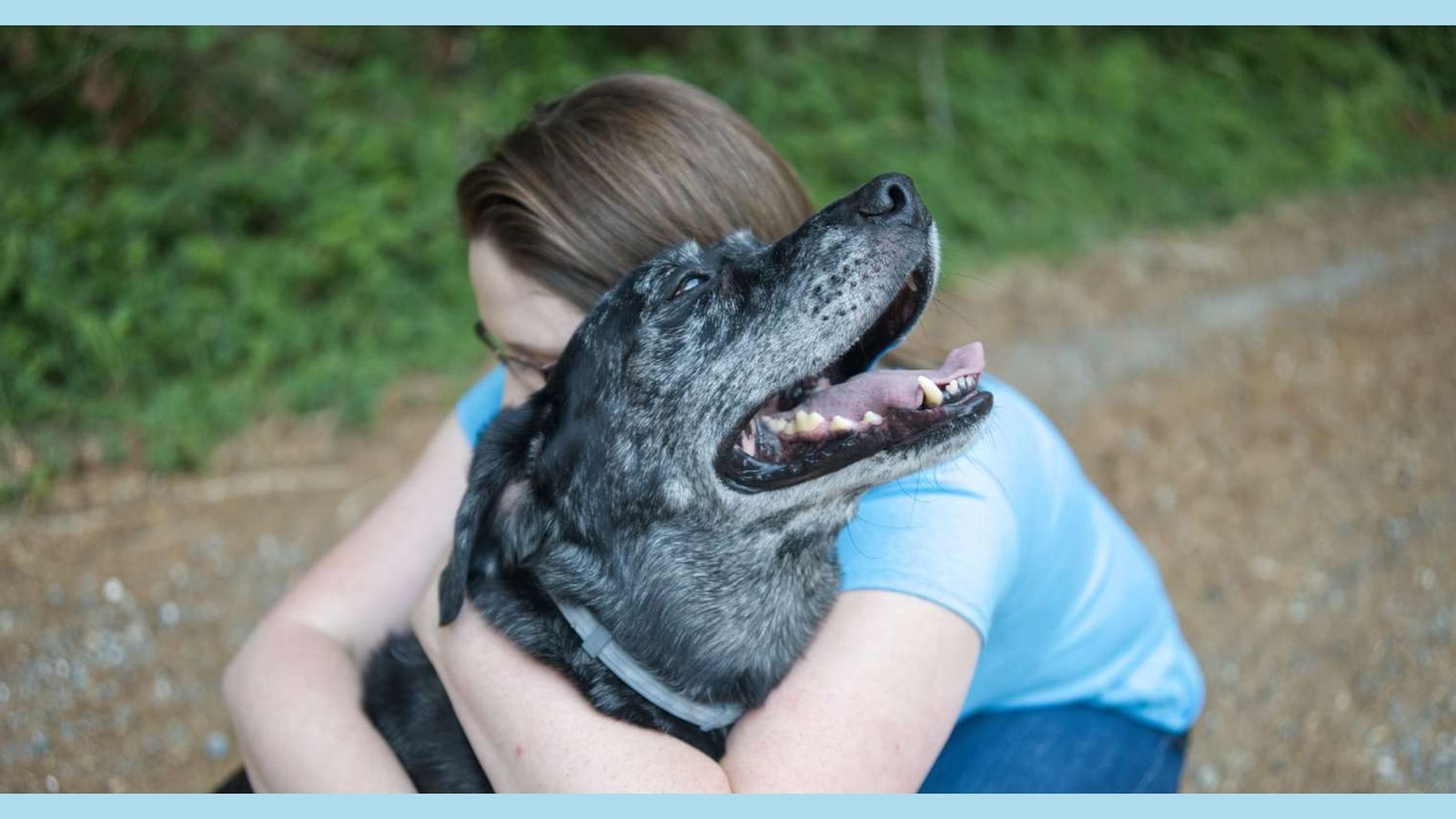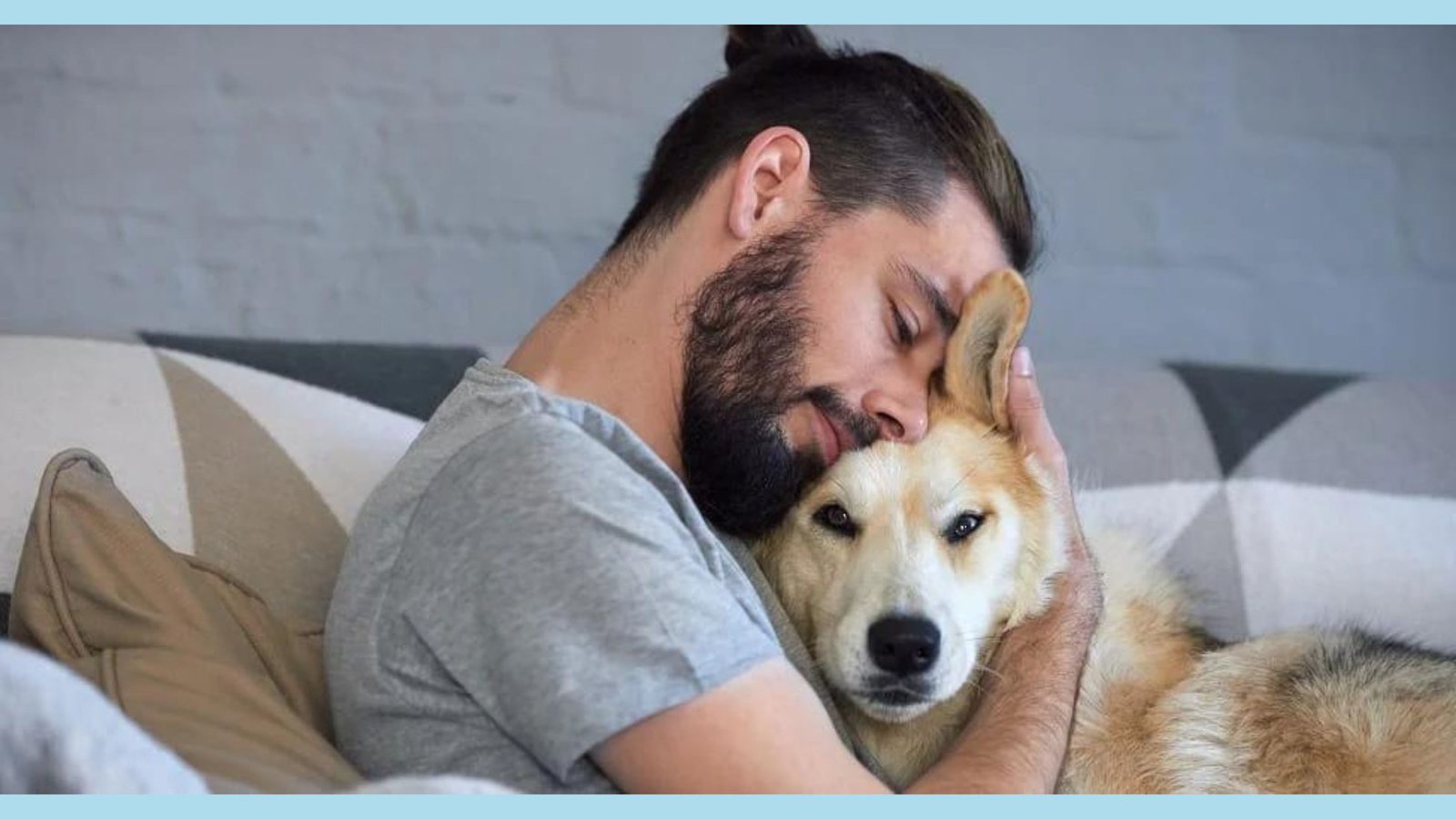
UNVEILING THE SECRETS OF DOG AFFECTION AND LOVE
Ever wondered if your furry pal relishes those warm hugs? Dive into the intriguing realm of dog love. This guide unravels the tale of doggy affection. We’ll decode the subtle signs, explore their emotional needs, and learn how to bond with your loyal friend.
Deciphering Dog Love Signals
Any dog convey love differently than humans. Their body language holds the key. We’ll learn to read the cues: wagging tails, playful antics, and more. Understanding these signals ensures a harmonious relationship.
Brace yourself for insights from experts and real-life tales. Get ready to bridge the gap between human gestures and dog love languages. A treasured friendship with your furry mate awaits.

INTERPRETING LOVE FROM THE DOG BODY LANGUAGE
As devoted dog lovers, we yearn to shower affection on our canine companions. Yet, not all gestures resonate with our furry friends. Hugs, a common human expression of love, may not always delight our four-legged pals.
Dogs communicate uniquely, and decoding their language is key. While hugs may seem natural to us, our canine counterparts might find this physical contact uncomfortable. Understanding how your dog feels is key to showing affection. Dogs use body language to share emotions. It’s vital to learn these signals.
Signs Your Dog is Stressed
When dogs feel uneasy or anxious, they might:
- Show the whites of their eyes (whale eye). It means they’re anxious or threatened.
- Get stiff or tense. If hugging makes them rigid, they dislike it.
- Turn away from you. They create distance if uncomfortable.
Recognizing these stress signs helps you adjust your behavior.
The Irresistible Puppy-Dog Eyes
Though hugs may stress dogs, they have cute affection displays. The famous “puppy-dog eyes” melt hearts. When dogs gaze with wide, imploring eyes, tilted heads and soft faces, it’s adorable. It conveys love and connection.
Researchers found that the puppy-dog eye is not just cute. It triggers oxytocin, the “love hormone,” in dogs and humans. This always makes even stronger the bond between you and your furry friend. It makes you feel trust and affection.
🔑 Key Points: Understanding how dogs communicate is vital. You need to know signs of stress and discomfort. But also, appreciate their unique ways of showing love, like the puppy-dog eye.

DO DOGS REALLY UNDERSTAND HUGS? THE REALITY OF DOG AFFECTION AND LOVE
As a dog lover, it’s natural to hug your dog. But do dogs truly get the meaning behind hugs? Hugging is how humans show love. But dogs communicate differently. Their ways of expressing love may differ from ours.
How Do Dogs View Hugs and how they respond
From a dog’s view, a hug can seem like restraint or dominance. In the wild, dogs put paws or bodies over others to show authority. When we hug dogs, it mimics this behavior. It can make them uncomfortable or threatened.
Not all dogs enjoy hugs. Forcing this affection causes stress and anxiety. Some dogs tolerate hugs from trusted owners. But hugging isn’t natural or enjoyable for them.
Being a Pet-Friendly Pal
As a caring dog companion, it’s crucial to respect your furry pal’s unique likes and limits. Rather than assuming all pups adore hugs, observe their body cues and reactions when you attempt to embrace them.
If your pooch stiffens up, turns away, or shows any unease signs, it’s better to refrain from hugging. Seek different ways to shower your affection instead. Every dog has its own personality, and what one pup enjoys might not appeal to another.
🔑 Key Points: While hugging is a common human affection gesture, dogs may not comprehend or appreciate this physical contact. Respecting your dog’s individual preferences and boundaries is vital for maintaining a positive, trusting bond.

SIGNS YOUR DOG MIGHT NOT ENJOY YOUR LOVE HUGS
As much as we love hugging our furry friends, it’s crucial to recognize signs indicating your dog might not enjoy this affection type. By being aware of these cues, you can ensure your love displays are well-received and don’t cause undue stress or discomfort to your canine pal.
The Whale Eye
One of the most noticeable signs that your dog is uncomfortable with a hug is the “whale eye” – when they show the whites of their eyes, often accompanied by a sideways glance. It’s a clear signal they’re feeling anxious or threatened by the physical contact.
Dogs tell us if hugs are okay or not. Look out for signs that show your pup’s comfort level. If they show the “whale eye” during a hug, release them gently. Give them space to move away. Respecting their boundaries prevents stress and negative reactions.
Stiffness and Tension
Another sign your dog dislikes hugs is stiffness or tension. If their body goes rigid or muscles tighten, they feel uncomfortable. Relaxed dogs lean into hugs. If your pup pulls away, they prefer no hugs then.
Dogs who enjoy hugs stay relaxed. They may even lean in. But if yours tries to create distance, respect that. They don’t want hugs at that moment.
Looking Away or Yawning
Dogs show discomfort subtly, like looking away during hugs. Yawning or lip-licking often accompanies this behavior. If your pup consistently avoids eye contact during hugs, they dislike the interaction.
Find other affection ways that suit their communication style. If your dog turns away or yawns when hugged, it shows dislike. Respect their preferences. Show love in ways they prefer.
Recognizing Individual Preferences
Remember, every dog is unique. What one enjoys, another may dislike. Some dogs from trusted owners may tolerate or like hugs. But others find hugs stressful or overwhelming. Know your pup’s preferences and show affection accordingly.
Dogs react differently to hugs than humans do. As a caring dog owner, you must pay attention to their body language. Note when they seem uncomfortable. By respecting their boundaries, your bond will stay positive and trusting.
🔑 Key Points: Watch for signs of unease like whale eye, stiffness, looking away, yawning. These hint your dog dislikes hugs. Find other ways to show affection that suit their preferences. This strengthens your connection.

HOW YOUR DOG VIEW ON THE LOVE HUGS
To understand how hugs affect dogs psychologically, consider their unique emotional needs. Hugs, an expression of human affection, can unsettle dogs. Psychology Today explains dogs may view hugs as restraint or dominance. Our arms around them mimic another dog asserting authority.
The “Guilt” Misconception
A common myth is that guilty dog expressions show they grasp our affectionate intent when hugged. But we often humanize animals, attributing human emotions to their behaviors.
Most times, a dog’s actions that appear guilty are just responses to our body language and tone. Dogs closely watch our expressions and vocal cues. They may act submissive or appeasing when sensing our disapproval or disappointment.
Emotional Wellness Matters
As caring pet owners, ensuring our pets’ emotional well-being is crucial. We must create an environment that fosters their comfort and happiness. By respecting their preferences and communication styles, we ensure our affection is well-received and beneficial for their overall well-being.
If your dog consistently seems stressed or uncomfortable during hugs, find alternative ways to express love and strengthen your bond. Gentle petting, playful interactions, or quality time together aligning with your dog’s natural behavior and preferences can work.
Building Trust and Understanding
Developing a strong, trusting relationship with your dog requires open communication and willingness to learn from their cues and behaviors. Observing and understanding your dog’s body language provides valuable insights into their emotional state, allowing you to adjust interactions accordingly.
Remember, every dog is unique. What works for one may not suit another. Some dogs may tolerate or enjoy hugs from trusted owners, while others may find the experience stressful or overwhelming. The key is approaching each interaction with patience, empathy, and commitment to your dog’s well-being.
🔑 Key Points: Hugging can affect dogs mentally. It may make them feel worried or stressed. To keep our pets happy, we should respect what they like. Building trust through open talks can help. Then, our loving hugs will be good for them.

HOW TO KNOW IF YOUR DOG LOVE HUGS?
Does any dog out there love hugs? Some dogs may not naturally enjoy hugs. But a few might like this type of love. These dogs were trained from a young age. They have a strong bond with their owners. So, how can you tell if your dog is a hug-lover?
Look for these signs:
Tail Wags
A clear sign your dog likes hugs is a happy tail wag when you hug them. A relaxed, excited wag means your dog enjoys the hug. But be careful. A slow or tucked tail can mean stress. Look at all their body signs. Be aware and remember that not every tail wag by the dogs means the same thing.
Leaning In
If your dog leans into your hug, it’s a good sign. When they press against you, they want that touch. It means they feel comfy and cozy with you. So, if you ask what does it mean when your dog is leaning in, probably is trying to subtly get something from you, or maybe your dog is just in the right place.
Relaxed Body Language
When a dog is truly enjoying a hug, their body language will typically be relaxed and at ease. They may have a soft, loose posture, with their ears in a neutral position and their mouth slightly open in a relaxed manner.
If your dog remains calm and content throughout the duration of the hug, without showing any signs of tension or discomfort, it’s a positive sign that they are comfortable with this type of interaction.
A dog at ease shows loose, calm posture. Ears are neutral, mouth softly open. No tension or distress signals. If your pup stays chilled through the hug, they likely dig it.
Paws on You
Some dogs may even go a step further and place their paws on you during a hug. This gesture can be a sign of affection and a desire for closer contact, similar to how humans might embrace one another.
If your dog gently places their paws on your shoulders or chest while you’re hugging them, it’s a strong indication that they are enjoying the moment and feel a strong connection with you.
Some dogs put paws on you during hugs. Like a human embrace! This often means they’re enjoying the closeness. Paws gently placed shows affection and connection. Your pup is savoring the snuggle sesh.
🔑 Key Points: Not every dog loves hugs. But enthusiastic tail wags, leaning in, relaxed vibes, and paw placements can signal they’re into it. Respect your pup’s cues. With care, you’ll know if hugs work for your bond.

HELPING YOUR DOG FEEL COMFORTABLE WITH THE LOVE EMBRACE
It’s vital to respect your pup’s natural likes and dislikes. Yet there may be times when teaching them to accept hugs can benefit all. For grooming, vet visits, or with kids or elders, helping your dog feel at ease with physical contact can make these moments less stressful.
Here’s a step-by-step guide blending these techniques:
Gradual Exposure and Positive Association
The gentle approach is key when teaching hug tolerance. Use positive reinforcement through desensitization and counter-conditioning. Desensitization means gradually exposing your dog to hugs, starting with brief, mild contact. Slowly increase duration and intensity as they get used to it. Counter-conditioning pairs hugs with rewards like treats or playtime. This associates hugs with positives, developing a favorable response.
Patient Training for Hug Comfort
Start by simply placing your arms near your dog. Reward calm behavior with treats and praise. Gradually move to light touch, then loose embraces. Progress patiently, rewarding each positive step. With time and consistency, your pup can learn to feel relaxed and comfortable with hugs on their own terms.
Start with light touches on your dog’s body. Gently stroke their shoulders or chest briefly. Then give a treat and praise. Repeat this many times until they feel relaxed.
Next, increase touch time slowly. Stroke for longer periods. But give treats and praise after each touch. If they seem stressed, go slower. When they’re comfortable with lengthy strokes, try a quick light hug. Treat and praise after hugging too. Stop if they look uncomfortable.
Gradually hug for longer periods. But watch their body language closely. If stressed, go back a step. Build hug tolerance slowly. To generalize hug tolerance, practice in diverse settings and with others. This helps your dog feel comfy with hugs anywhere. The aim isn’t forcing enjoyment but building tolerance. Respect their limits. Prioritize their well-being and comfort levels always.
Relaxed Approach for Welcoming Hugs
Teaching dogs to feel comfy with hugs takes patience and consistency. Use positive reinforcement methods. Go at your dog’s pace. Never force dogs into situations that make them uncomfortable.
With desensitization and counter-conditioning, while respecting boundaries, you can help dogs grow more hug-friendly over time. This strengthens your bond. It also prepares them for various social scenarios throughout life.
🔑 Key Points: A gentle, gradual approach using desensitization and counterconditioning helps dogs accept hugs. Pair brief, controlled hug exposures with positive reinforcement. Consistently respect your dog’s comfort levels. This can make them more accepting of necessary physical contact.

DEBUNKING MYTHS: DOMINANCE AND RESTRAINT IN DOG LOVE HUGS
When understanding dogs’ hug reactions, some myths can lead to misinterpretation and harm. A pervasive myth revolves around dominance – the belief that hugging asserts control.
The Dominance Myth Debunked
The idea that hugging shows dominance stems from outdated wolf pack hierarchy theories. Dogs were thought to view humans as pack members. However, modern research debunks this. Dogs have evolved unique ways to bond with humans.
Embracing a dog does not show you are the boss. In fact, it can hurt the trust between you and your furry friend. Dogs do not see hugs as a challenge to their status in their bond with humans.
The Feeling of Being Trapped
Another reason dogs dislike hugs is feeling confined or unable to move away. When we hug them, we limit their ability to escape if feeling threatened or uncomfortable. This sense of being trapped can stress dogs not used to close contact.
It can also trouble those with past negative restraint experiences. Keep in mind, each dog is unique with their own personality and past. What one dog tolerates may overwhelm another.
RESPECT YOUR DOG’S BOUNDARIES AND PUT THEIR EMOTIONAL WELL-BEING FIRST
In Summary: Dog Love, Affection and Hugging Your Dog
In short, “Dog Love: Should You Hug Your Dog?” explores the complex world of dog love and affection. By reading your dog’s body cues like whale eye or puppy eyes, you build a bond of mutual understanding.
While hugs may not suit every pup, this blog suggests alternative love like belly rubs, scratches, and playtime. By respecting your dog’s needs and likes, you nurture an environment focused on their emotional health.
Dogs are like people – each one’s a special individual. To bond deeply with your pup, learn their unique love language. Use positive rewards, and watch for cues about what they enjoy. By tuning into your dog’s needs, you create a caring connection.
Thanks for exploring how we can enrich life’s journey with loyal four-legged friends! Through understanding, we deepen canine companionship. If you have a dog that love hugs, you are one of the lucky ones!
If you like to know how dogs feel about hugs, jump in the article at The Wildest!









